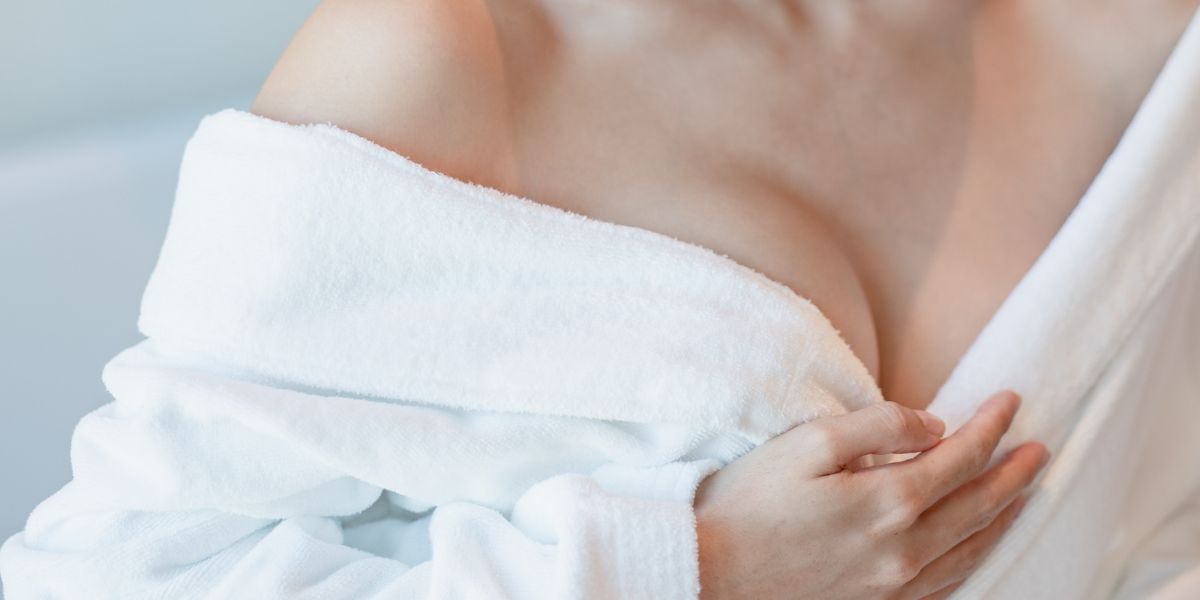
What Happens to Our Breasts During Menopause?
Jan 16, 2024As our hormones change so does the shape, size, and feeling of our breasts. Here’s what active women should know.
By Selene Yeager
As active women, we have a unique relationship with our breasts, as we can spend many years post-puberty (and then again perhaps post-pregnancy) finding the most effective ways to keep them comfortably in place as we lift, run, ride, swim, and more. That, of course, is on top of the usual concerns of watching for lumps, bumps, and managing monthly tenderness and pain.
The hormonal changes of the menopause transition can send us back to square one, as our breasts can grow, shrink, change shape and “texture” and may become tender and achy at unexpected times. Here’s what you need to know.
Breast Size Changes During Menopause
This one can take many women by surprise. Most of us have heard that our weight can shift and our waistlines can widen, among other body composition changes during menopause. But lots of perimenopausal women are blindsided by their boobs changing proportions. Yet, it’s pretty common. Research finds that about 1 in 5 women need a new bra size after menopause, mostly larger, though about 2% report needing a smaller size.
If your breasts have changed, do yourself a favor and invest in some new well-fitting sports bras. You’ll not only be more comfortable, but it also may improve performance and reduce your risk of injury if you’re a runner.
Research has found that highly supportive sports bras can increase running economy and boost women’s running performance by 7 percent. A study published in Frontiers in Sports and Active Living provides some insights into how and why a good sports bra has those benefits: When your breasts are left to bounce, that movement reverberates through your body and impacts your knees, increasing what is known as knee joint excursion (in this context movement outside of the desired path). When the breasts are more firmly controlled, there’s less excursion and more positive joint stiffness, which improves running economy.
“The findings show that breast support not only influences movement of the breasts but that compensations occur across the entire body,” said lead researcher Dr. Douglas Powell. These compensations can lead to reduced running performance, increased injury risk, and even the development of chronic pain such as back and chest pain.
Why Your Breasts May Feel Different During Menopause
The composition of our breasts also changes during menopause. Mammography research shows that older women have less dense breast tissue than younger women. The biggest change in density happens during the menopause transition when the breast tissue that makes milk starts to shut down and the glandular tissue in your breast shrinks and loses shape. The tissue can become more fatty over this time as well, so your breasts may feel softer. This change in density can make normal lumps feel more noticeable.
Breast Pain During Menopause
You may find your breasts hurt at random times, which can be disconcerting. The hormonal fluctuations occurring during the menopause transition can make your breasts feel more tender and painful. It’s similar to the pain women often experience before their period during premenopausal years. Fluid builds up in the breasts, making them more swollen and tender. Because hormones swing unpredictably during perimenopause, this can happen at pretty much any time of the month. A well-fitting bra, over-the-counter pain relievers, and cold and/or hot compresses can help.
How Hormone Therapy Affects Breast Density
One of the downsides of hormone therapy is that it is associated with an increase in breast density, which can make it harder for mammograms to detect breast cancer. A recent systematic literature review found that there is a positive association between menopausal hormone therapy use and mammographic density with the highest increase in density among current users and continuous estrogen plus progestin (CEP) users. If you find yourself with increased breast density, you may require additional screening procedures and/or advanced imaging techniques.

Breast Cancer Risk with Age
Breast cancer risk increases with age and is most common among women over 50 who are postmenopausal. Approximately 8 out of 10 cases of breast cancer occur in women aged 50 and older.
It’s important to practice good breast health care at every age, but especially as we hit menopause and midlife. For more on how to lower your risk and protect your breasts, check out our previous blog on Breast Health for Menopausal Women.
Get Feisty 40+ in Your Inbox
We hate SPAM. We will never sell your information, for any reason or send you emails that suck!


